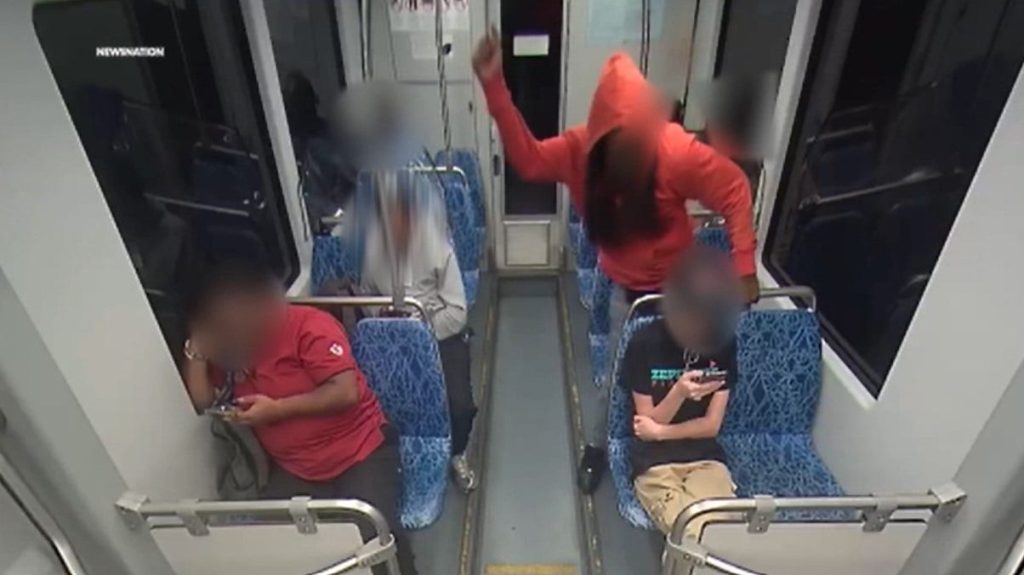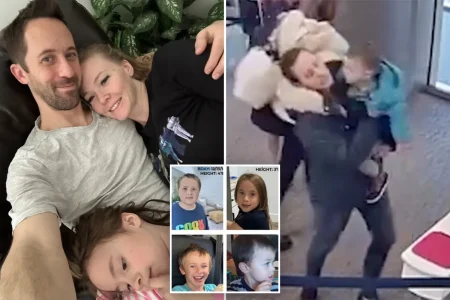Ukrainian Refugee’s Tragic Last Moments on Charlotte Train Captured on Video
The life of Iryna Zarutska, a 23-year-old Ukrainian refugee who had fled her war-torn homeland seeking safety in America, ended tragically on a Charlotte light rail train last month. Surveillance footage recently released by the Charlotte Area Transit System (CATS) documents the heartbreaking final moments of a young woman whose journey from conflict to a new beginning was cut short in an act of senseless violence. The video shows Zarutska, dressed in her pizzeria uniform, quietly scrolling through her phone on the Lynx Blue Line on the evening of Friday, August 22nd, like any other commuter heading home after work. In just four minutes, her ordinary journey transformed into tragedy when a man seated behind her—later identified as 34-year-old Decarlos Brown—pulled out a knife and attacked her without warning or provocation, stabbing her three times, including fatally in the neck. As other passengers looked on in horror, Zarutska clutched her neck as blood spilled onto the floor of the train car.
The footage continues to show the aftermath as Brown calmly removed his red hoodie, waited by the doors, and exited the train while shocked passengers remained. Emergency responders later pronounced Zarutska dead at the scene. This brutal attack appears to have been entirely random, with police confirming that Zarutska and Brown had no prior connection to each other. What makes this tragedy even more poignant is Zarutska’s background—having escaped the dangers of war in Ukraine only to fall victim to violence in what should have been her safe haven. Her death represents not just the loss of a young life but the shattering of hope that had brought her across the world to build a new future.
The suspect’s history raises difficult questions about public safety and the criminal justice system. Records show that Brown has an extensive arrest record spanning more than a decade, with previous charges including felony larceny, robbery with a dangerous weapon, and communicating threats. Following the attack, Brown was initially hospitalized before being arrested and charged with first-degree murder. The case has naturally prompted concerns about how someone with such a history was free to commit such a violent act against an innocent bystander. For many community members, this tragedy has become a symbol of broader systemic failures in preventing violent crime and protecting vulnerable populations.
Zarutska’s murder has ignited renewed calls for improved safety measures on Charlotte’s public transit system. Members of the Charlotte City Council have expressed deep concern following this incident, acknowledging the need to address violence on public transportation more effectively. The brutal and public nature of this attack has especially rattled the community, as it occurred in a space many citizens use daily and should reasonably expect to be safe. For the Ukrainian community in Charlotte, this loss is particularly devastating—a stark reminder that the safety they sought in America isn’t guaranteed. Many are now questioning what additional security measures might have prevented such a tragedy and what changes are needed to ensure other commuters don’t face similar dangers.
The political response to Zarutska’s death has been swift and divided. Rep. Brenden Jones, a Republican representing the area, characterized the tragedy as “the result of decades of Democrat DAs and Sheriffs putting their woke agendas above public safety,” adding that “violent criminals commit crimes with impunity, while families live in fear.” This framing has positioned Zarutska’s death within broader debates about criminal justice policies, bail reform, and public safety priorities. However, beyond the political rhetoric lies the reality of a community in mourning and the urgent practical question of how to prevent similar attacks in the future. Transit officials, law enforcement, and city leadership now face pressure to implement meaningful changes to restore public confidence in the safety of Charlotte’s transportation system.
At its heart, this story is about Iryna Zarutska—a young woman whose courage brought her from a war zone to a new country, where she was building a life one shift at a pizzeria at a time. Her death represents more than a crime statistic; it’s the loss of all the potential, dreams, and contributions she might have made to her adopted community. As Charlotte grapples with this tragedy, the fundamental questions remain: How can public spaces be made truly safe for everyone? How can the system better identify and intervene with potentially dangerous individuals before violence occurs? And how can communities honor Zarutska’s memory by ensuring that others who come seeking refuge find genuine safety instead of danger? These questions transcend political divides and speak to our collective responsibility to protect the vulnerable and uphold the promise of safety that America offers to those fleeing conflict abroad.










